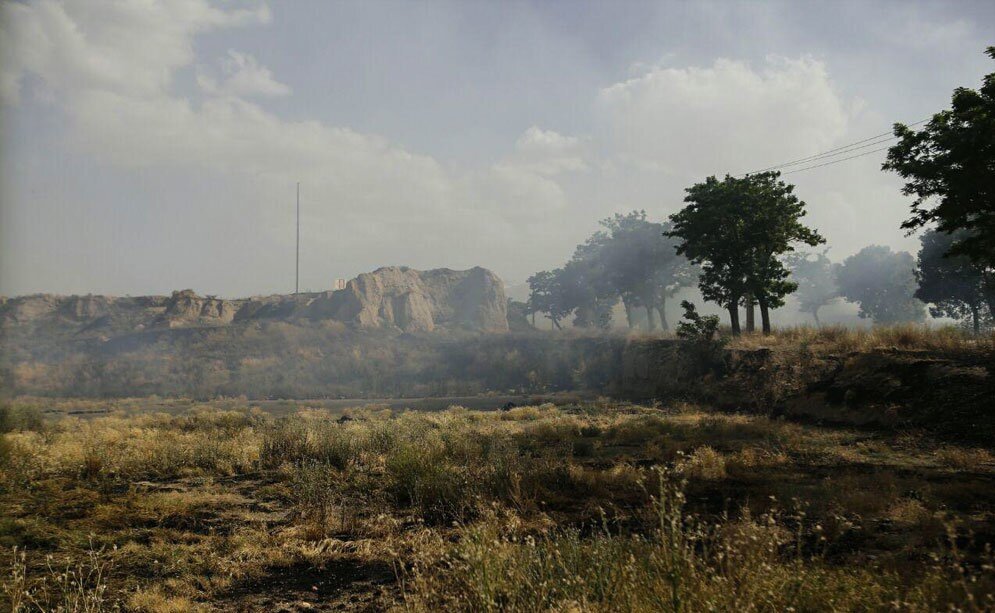Hegmataneh put on fire once again despite warnings

A fire broke out at the ancient Hegmataneh Hill in the west-central Iranian province of Hamedan on Friday, an incident that has occurred frequently despite warnings in recent years.
Although the fire has inflicted no damage to the main parts of the historical site, it seems a matter of concern when the historical value of Hegmataneh is taken into account.
The Hegmataneh Hill, also called Tepe Hegmataneh (thought to correspond to the ancient citadel of Ecbatana), has a circumference of 1.4 kilometers with an area of about 40 hectares, which is usually covered with the weeds.
A few weeks earlier, some local media in Hamedan warned about the dry vegetation and the summer heat in the region which can cause frequent fire in the site.
“We try to organize and weed out parts of Hegmataneh Hill, which is the passage of tourists, to prevent such incidents in the future, but certainly covering all 40 hectares is impossible,” provincial tourism chief Ali Malmir announced on Friday.
However, this time it seems the cause of the fire is different. “Since this part of the complex is the passage of passers-by, it is possible that the fire occurred accidentally or intentionally by a cigarette butt or a light match,” he added.
But blaming people and visitors rather than accepting the responsibility wouldn’t be a proper way out for the officials.
It seems that the officials are accustomed to weeding out this historic site with a fire and that’s why they do not feel the need to address the issue or take seriously any of the warnings of archaeologists.
Malmir also noted that the fire couldn’t harm the historical relics in the site as most of them are located at a depth of more than three meters.
Even if, according to the officials, the fire doesn’t cause any damage to the historical site, as a tourist destination, the visual beauty of this area will definitely be damaged. At the same time, reporting the news of the burning of a historic site - every year - may not be a good thing for the tourism industry of the province.
Last year archaeologist Mohammad Rahim Sarraf, in an interview with ISNA, warned that these continuous fires gradually damage some of the areas in the site, which haven’t yet been studied archaeologically.
Small sections of this ancient Median and Achaemenid city have been excavated over the last century, most extensively in the 1990s. There’s a smart museum nearby, as well as two Armenian churches, now part of Hamadan University.
Ecbatana was first excavated in 1913 by the French Assyriologist Charles Fossey. Excavations have been limited due to the modern town covering most of the ancient site.
In 2006, excavations in a limited area of Hegmataneh Hill failed to discover anything older than the Parthian period (247 BC – 224 CE), but this does not rule out older archaeological layers existing elsewhere within the vast site.
Known in classical times as Ecbatana, Hamedan was one of the ancient world’s greatest cities. It was the capital of Media and subsequently a summer residence of the Achaemenian kings who ruled Persia from 553 to 330 BC.
ABU/MG
Leave a Comment